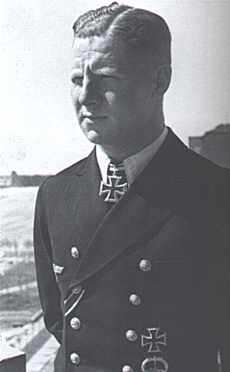An Analysis of the devastation
wrought by U-boats during
World War Two.
A post-second world war analysis of U-boat activity records some 4409 attacks on shipping. Subsequent analysis of this information reveals the following details;
n.b an attack does not imply the use of a single torpedo or shell.
| Description of incidents | Numbers | Tons. | % of total attacks |
| Ships Sunk | 2919 | 14,232,747 | 66.2 |
| Ships damaged beyond repair | 32 | 193,748 | 0.7 |
| Ships Taken as prize | 5 | 10,018 | 0.1 |
| Damaged | 401* | 2,707,398 | 9.1 |
| "Missed", attacks on identified targets with no result | 103 | 2.3 | |
| Attacks where details are unable to be verified | 949 | 21.5 |
*Of the 401 ships damaged, 101 of them (708,712 tons), were later sunk.
In total the allies lost 14,436,513 tons of shipping to the U-boats, this represents 68% of all the shipping lost by the allies due to enemy action (total 21,194,00 tons, Churchill's History of the Second World War Vol 2).
Thus we can see from the above figures that the U-boat was a devastatingly effective weapon.
Analysis By Weapon Type.
| Weapon used | Total No Attacks |
Sunk | Damaged Beyond Repair |
Damaged |
| Torpedo | 3521 | 2408 | 24 | 312 |
| Torpedo & Gunfire | 209 | 191 | 1 | 11 |
| FAT Torpedo | 60 | 22 | 1 | 13 |
| GNAT Torpedo | 259 | 49 | 5 | 18 |
| LUT Torpedo | 20 | 3 | 1 | 3 |
| Gunfire | 215 | 158 | 0 | 16 |
| Gunfire & Ramming | 4 | 3 | 0 | 0 |
| Gunfire & Scuttling | 7 | 6 | 0 | 1 |
| Mines | 94 | 66 | 0 | 27 |
| Ramming | 5 | 3 | 0 | 0 |
| Scuttling | 10 | 10 | 0 | 0 |
The most disappointing weapon would appear to be the acoustic homing torpedo (GNAT=German Navy Acoustic Torpedo, also known as the G7s, T5 and code named Zaunkönig) it had a sinking success rate of about 19%. This was heralded as the "destroyer buster", it should have been a very successful weapon, with the U-boat commander only having to fire it in the general direction of the intended target. It is likely that this low strike rate is due primarily to the effectiveness of the allied countermeasures, in particular the use of the British FOXER and Canadian CAT, these noise boxes were towed along behind ships when in the dangerous waters.
Attack analysis compilation: Malcolm Holley.

